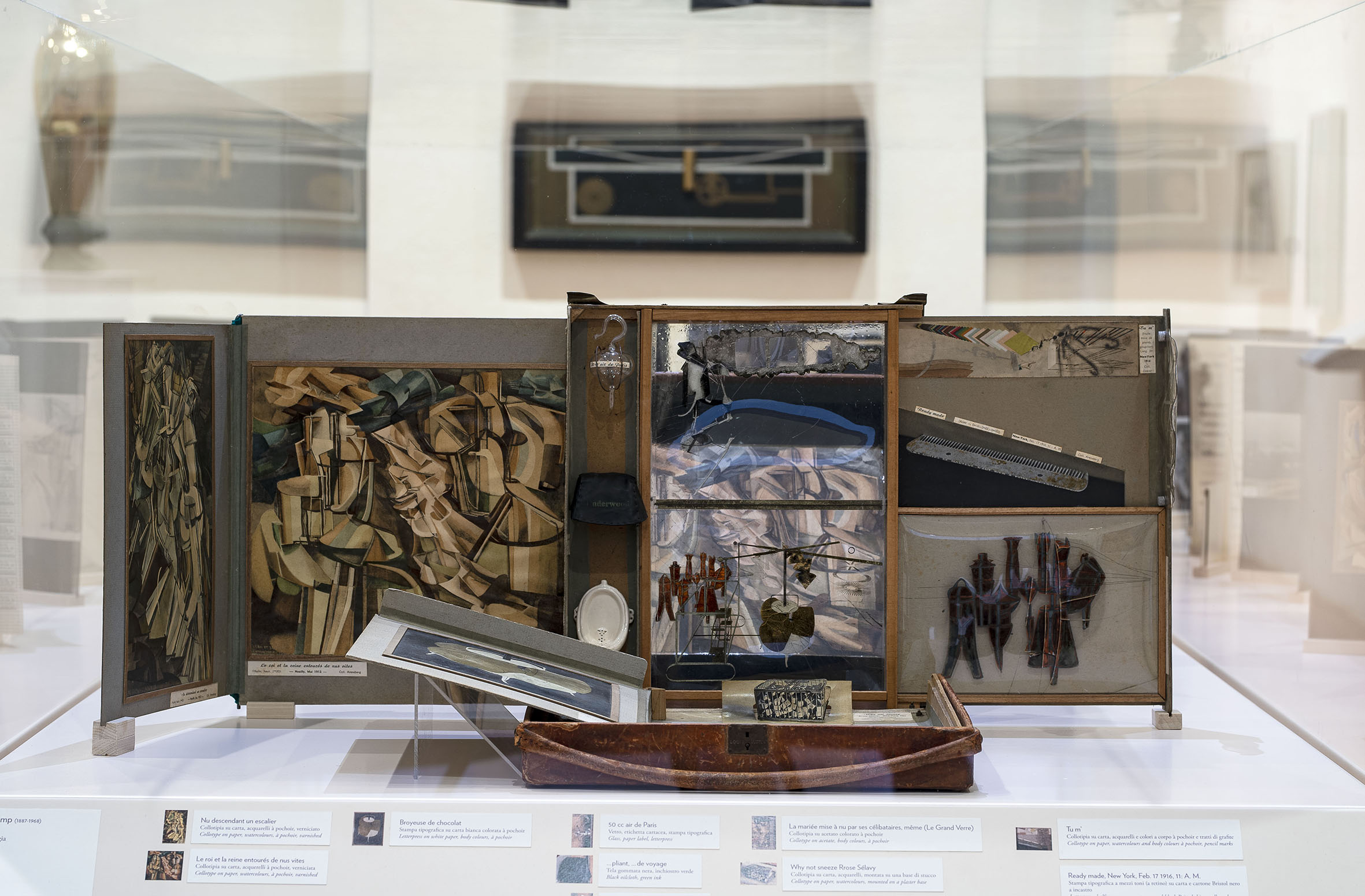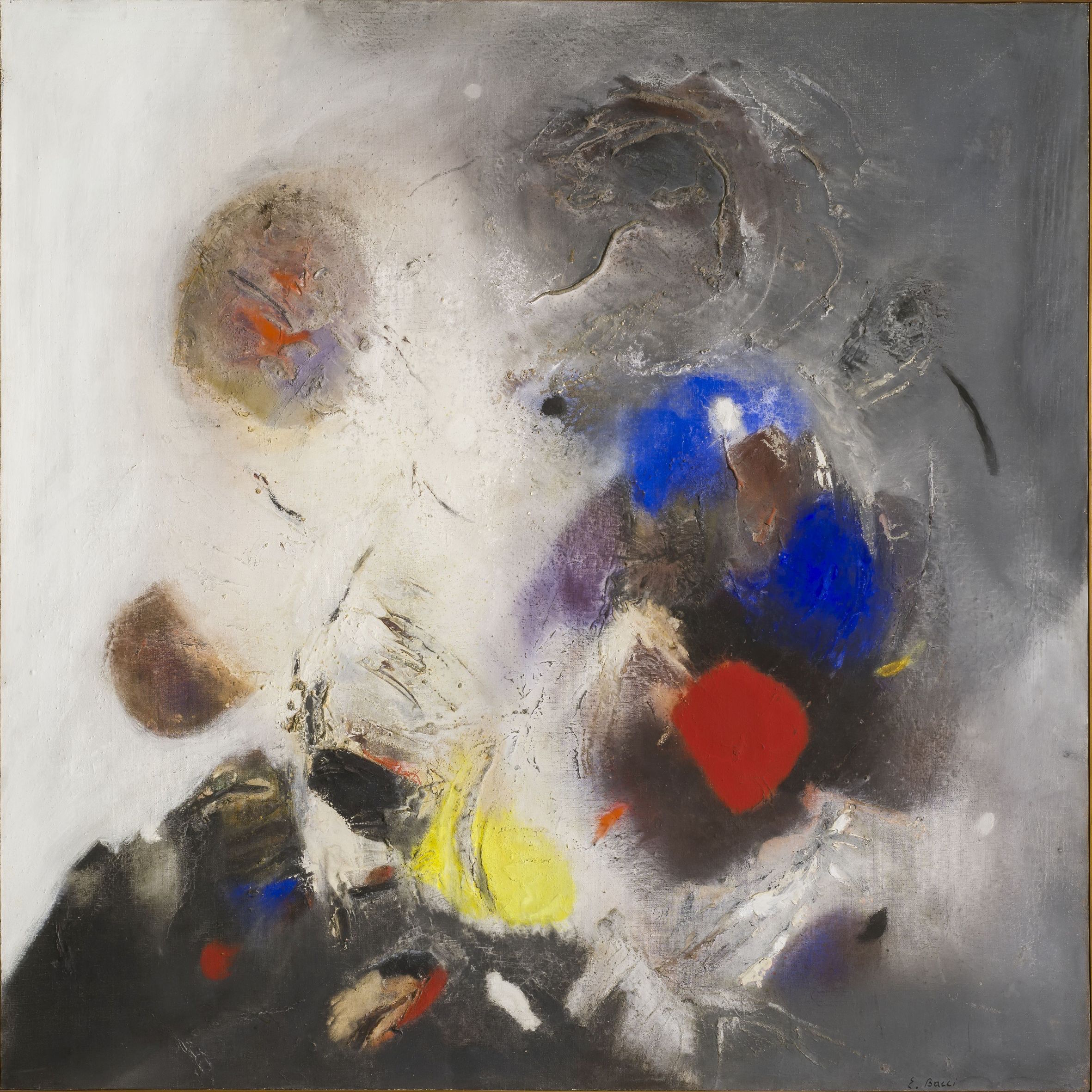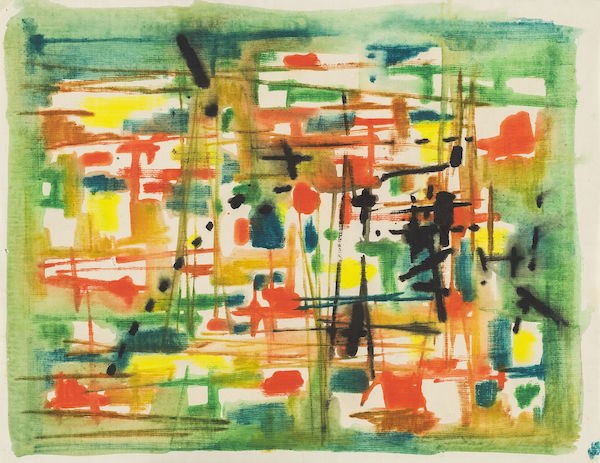Marcel Duchamp, Box in a suitcase (Boîte-en-Valise), 1935-1941. Leather suitcase containing miniature copies, color reproductions and a photograph of the artist’s works with additions in pencil, watercolor and ink. Peggy Guggenheim Collection, Venice (Solomon R. Guggenheim Foundation, New York) © Association Marcel Duchamp, by SIAE 2022. Photo Matteo De Fina
We will soon have the opportunity thanks to a major exhibition announced by the Peggy Guggenheim Collection for 2023. The appointment is for mid-October, when important loans from Italian and American museums such as the Philadelphia Museum of Art, as well as numerous private collections, will be brought together in Palazzo Venier dei Leoni.

Marcel Duchamp, Box in a Suitcase (Boîte-en-Valise), 1935-1941. Leather suitcase containing miniature copies, color reproductions and a photograph of the artist’s works with additions in pencil, watercolor and ink. Peggy Guggenheim Collection, Venice (Solomon R. Guggenheim Foundation, New York) © Association Marcel Duchamp, by SIAE 2022. Photo Matteo De Fina
Curated by Paul B. Franklin, an independent scholar based in Paris and an expert on Duchamp, the project will have its ideal fulcrum in the masterpiece of Boîte-en-Valise (Box in suitcase, 1935-41) recently restored at the Opificio delle Pietre Dure: a surprising portable museum containing 69 miniature replicas and reproductions of Duchamp’s work, an extreme parody of art and creative mechanisms that strikes at the heart of the very idea of a museum . Peggy Guggenheim bought it directly from the artist shortly after its creation, with whom she was bound by a long and sincere friendship.
They had met in Paris in the 1920s and when, in 1938, the American collector opened her first gallery in London, Duchamp did not fail to help her: it was he who introduced her to the artists and taught her, as she herself recounted in ‘autobiography A life for art (Rizzoli, 1998), “the difference between abstract and surrealist art”. In the same book, about the Boîte-en-Valise Peggy says: “I often thought it would be a lot of fun to go and spend a weekend carrying that suitcase instead of the usual bag that was considered indispensable.”

Edmondo Bacci, Avvenire #247, 1956. Oil and sand tempera on canvas, 140.2 x 140 cm. Peggy Guggenheim Collection, Venice (Solomon R. Guggenheim Foundation, New York). Photo Sergio Martucci
Marcel Duchamp and the seduction of the copy is not the only major appointment scheduled at the Peggy Guggenheim Collection for 2023. Opening the year of the Venetian museum, from 1 April to 28 September, will be the exhibition Edmund Bacci. The energy of light, dedicated to a Venetian artist who was above all “an artist of the world”, one of the few Italian artists capable of achieving success in life, exhibiting in the most important national and international museums and art galleries. Active in lively post-war Venice, Bacci immediately attracted the attention of the most attentive critics and collectors, and Peggy Guggenheim could not miss the appeal. The exhibition will pay homage to him by focusing on the happiest moment of his production, the 1950s, which saw him achieve success in the setting of his birthplace and inspiration, and obtain definitive consecration at the 1958 Venice Biennale, which he dedicated an entire room to him.

Edmondo Bacci, Untitled, 1953 c. Tempera on paper, 30 x 39 cm. Edmondo Bacci Archive, Venice. Photo Sergio Martucci

